Meraki Conversion Guide
Prerequisites
- Meraki system must be running 14.0 or later.
- Guide assumes the network is using an on-prem Meraki MX Controller.
- Meraki system has AP(s) linked to the MX Controller.
- Meraki system has basic traffic routing working with existing SSID(s).
- An Intel-based host is required in the network to run the RadSecProxy container.
High Level Steps
- Deploy RadSecProxy container and record IP address of host
- Build Meraki Helium Passpoint SSID
- Build a new SSID
- Configure SSID to use RADIUS
- Build Hotspot 2.0 Profile
Deploy RadSecProxy Container
RADIUS messages used to authenticate users and for session accounting are transmitted unsecured and over UDP by default. By directing these messages internally in your secure network to a RadSecProxy, the UDP is then converted to a TLS protected TCP connection to the Helium Network core AAA servers.
Prerequisites
- An intel based machine with Docker installed.
- The intel based machine has a private IP in your network reachable from your Meraki Mobility Controller
- ACLs or Firewalls allow Meraki Mobility Controller and Docker Container to communicate UDP on port 1812 and 1813
- ACLs or Firewalls allow container/host to reach the internet on TCP ports 2083 and 3802.
Container Deployment
- Un-zip and untar the
Helium_RadSec_Docker.tar.gzfile into the directory of your choice on the host machine. This will unpack the following items:Dockerfile- The docker instructions on how to build the containerRadsecproxy.conf- The radsecproxy config file is pre-populated to connect to Helium Network AAA serversdocker-compose.yml- File to start and stop the container as a daemon.
tar -xvzf Helium_RadSec_Docker.tar.gz
- Into the same directory copy the 3 certificates obtained from Helium Network
- ca.pem - the root CA certificate
- cert.pem - the user certificate
- key.pem - the key file matched to the certificate
- Start the container using:
sudo docker compose up -d
- If/when needed, stop the container using:
sudo docker compose down
Build Meraki Helium Passpoint SSID
The following steps will configure your Meraki system to broadcast an SSID with the needed Passpoint and RADIUS configurations to support Helium Mobile user offload.
To start login to your Meraki Dashboard in your browser, this will be our starting point for all major steps below
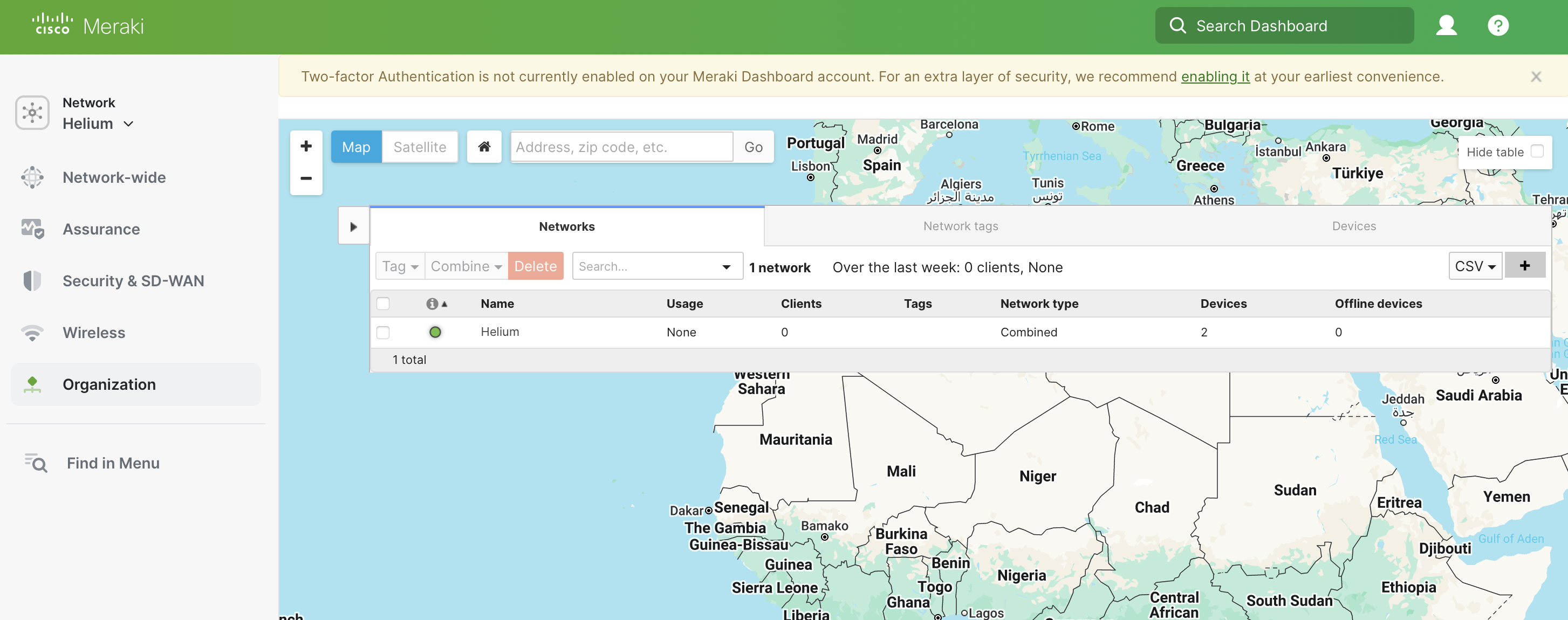
In the following steps we will only mention mandatory fields to set. Most windows will have many other parameters with default values set. Leave any unmentioned parameter at it's default value.
Build a new SSID
- Click on Wireless and then SSID in the left menu column
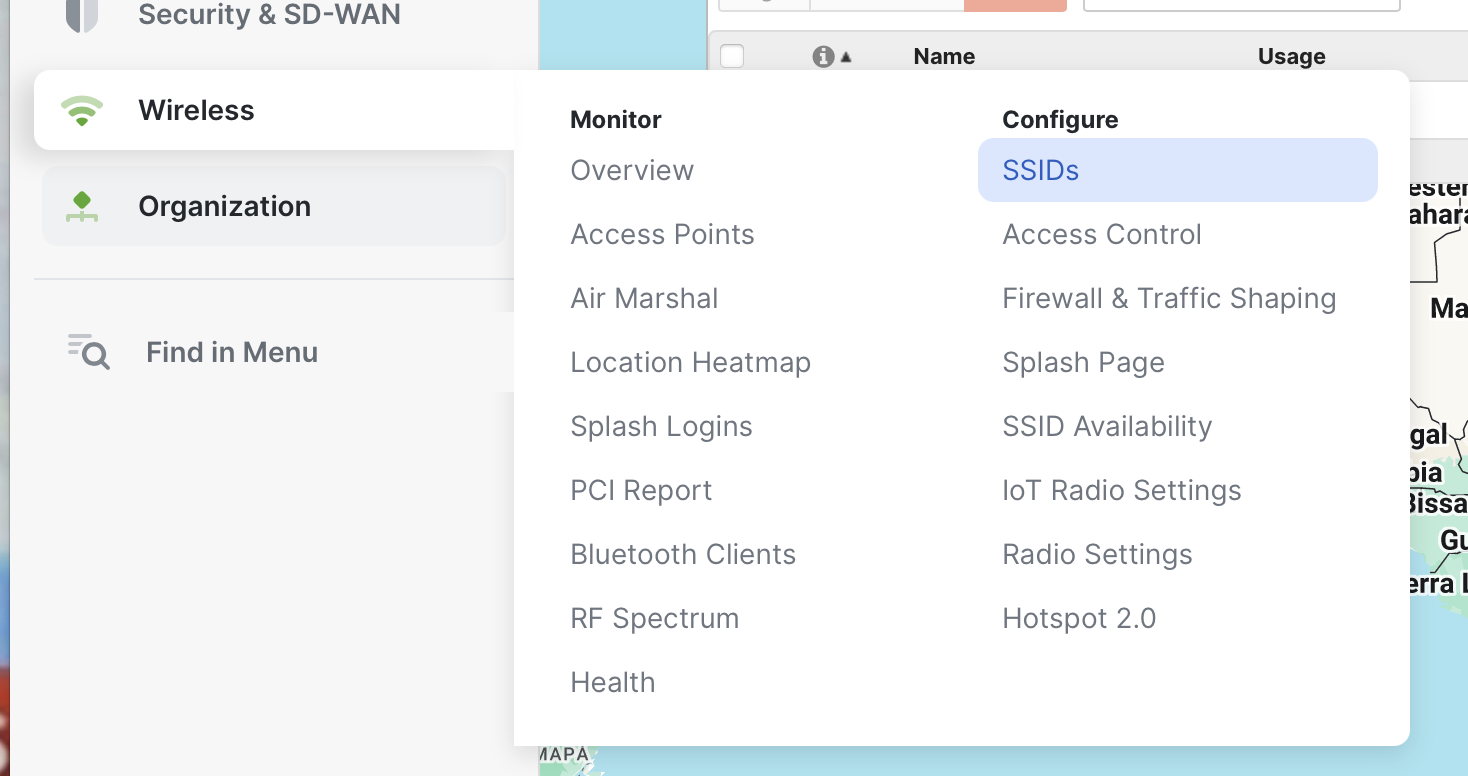
- Look for a “Unconfigured SSID X”
- Click on rename
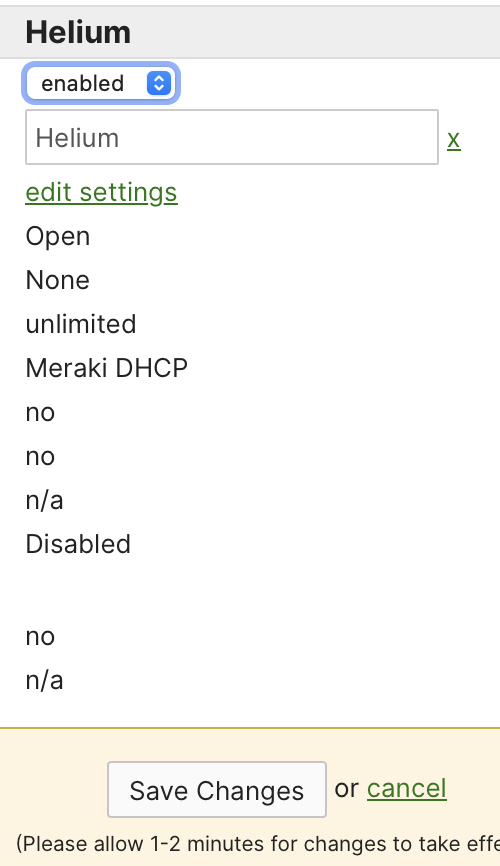
- Enter “Helium”
- Select Enabled
- Click Save Changes
Configure Helium SSID for RADIUS Access Control
Helium is aware that Meraki has some native support for RadSec. Unfortunately, the Meraki implementation is not scalable for a network like Helium. Meraki builds a CA certificate specific to each group of APs and ask for it to be loaded on the AAA. That does not scale and there is no way to load the client certificate and key Helium produces during onboarding into the Meraki RadSec client. So for now the guide below uses our RadSecProxy container and plain RADIUS configuration on the Meraki devices.
- Click Edit Settings
- Under Security heading toggle the circle Enterprise with
- Select my RADIUS Server

- Scroll down to RADIUS and click the arrow on the right to expand
- Click add server and add the following configurations
- Enter IP Address: <ip of your radsecproxy container host> Port: 1812 Secret: mysecret. Click Done.
- Add a second server if desired for HA redundancy.

- Repeat those steps to add the same server to the RADIUS Accounting Servers list using port
1813.

- Select the check box next to Radius CoA Support

- Click on the arrow to expand the Advanced RADIUS settings section
- Change the number 1 drop down for NAS ID to Custom and enter the NAS-ID you got during onboarding
- Click the × to remove number 2 in that list which says SSID Number
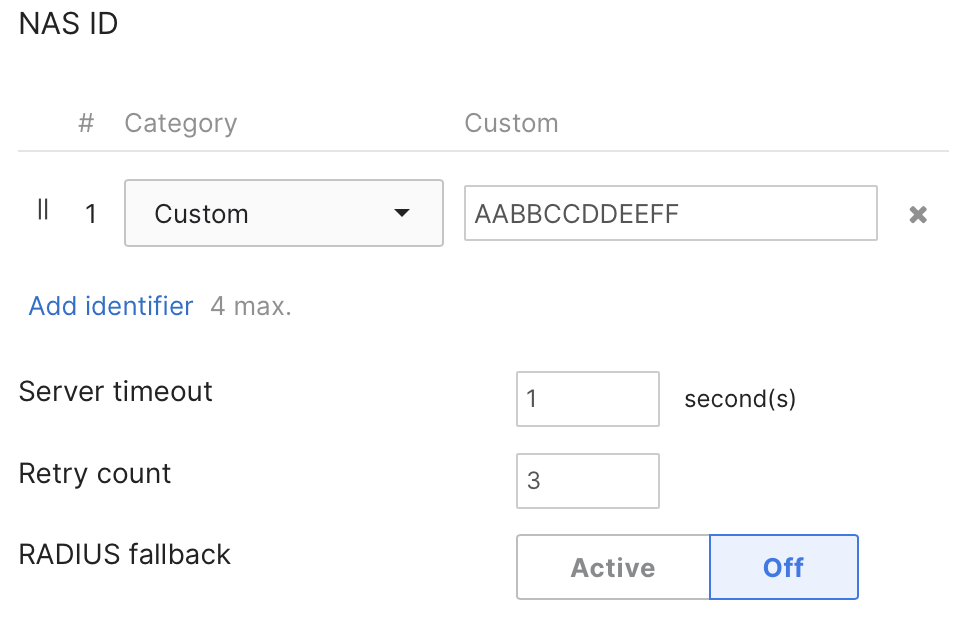
- Click Save
Build Hotspot 2.0 Config
- Click on Wireless and navigate to Hotspot 2.0

- Change the toggle for Hotspot 2.0 to Enabled
- Enter Operator Name to be “Helium”
- Enter Venue Name to be the street address of your location
- Choose the best fitting Venue Type from the drop down
- Choose Chargeable public network from the drop down
- In domain list enter both FreedomFi.com and Hellohelium.com
- Click Create Realm
- Enter freedomfi.com as the name
- Select Add EAP Method
- Select Method ID to be 13 EAP-TLS
- Select Authentication Methods to be Certificate under
- Click Create realm
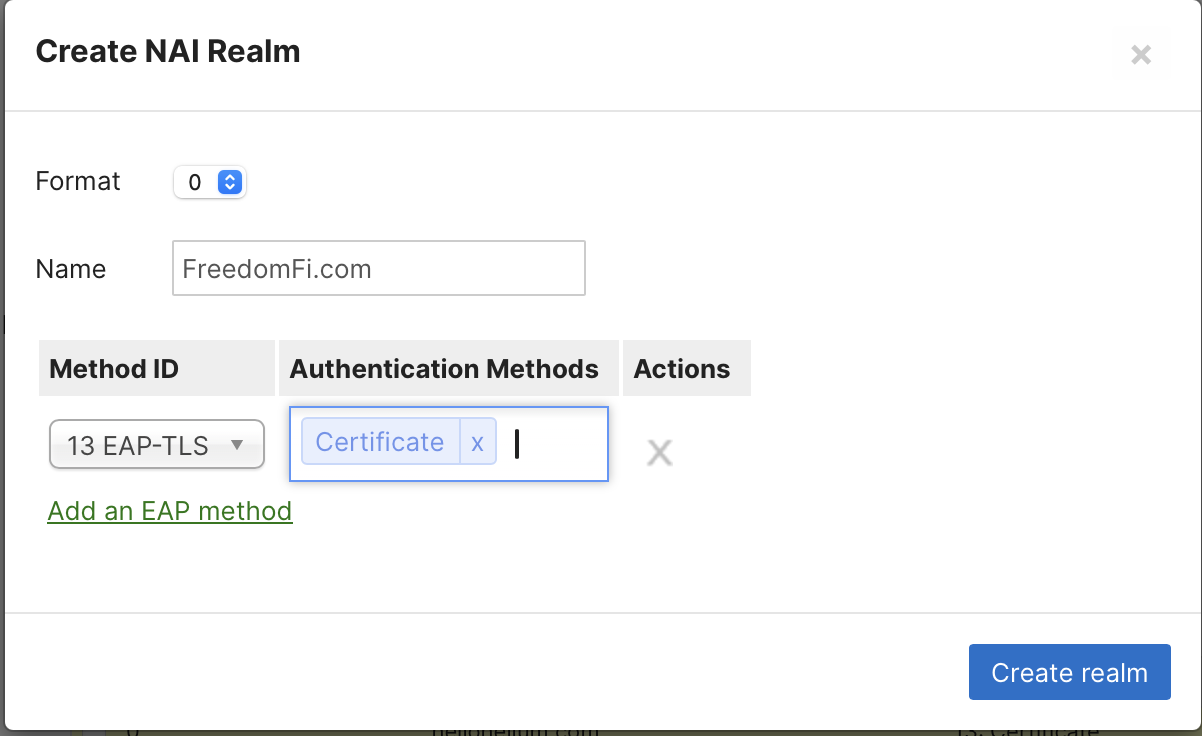
- Repeat for realm name Hellohelium.com with matching settings.
- Final Hotspot 2.0 settings should look like this:

- Click Save Changes